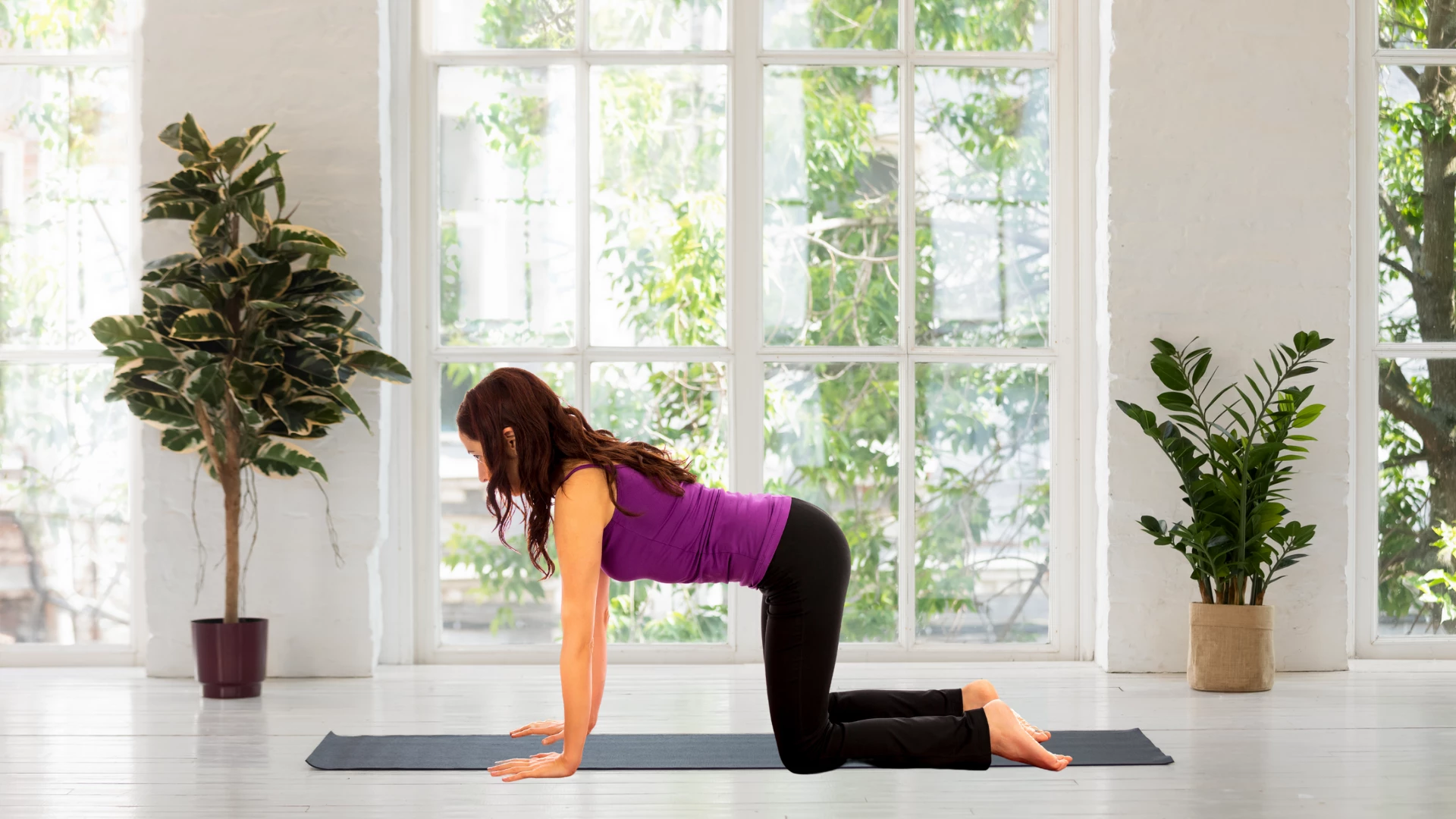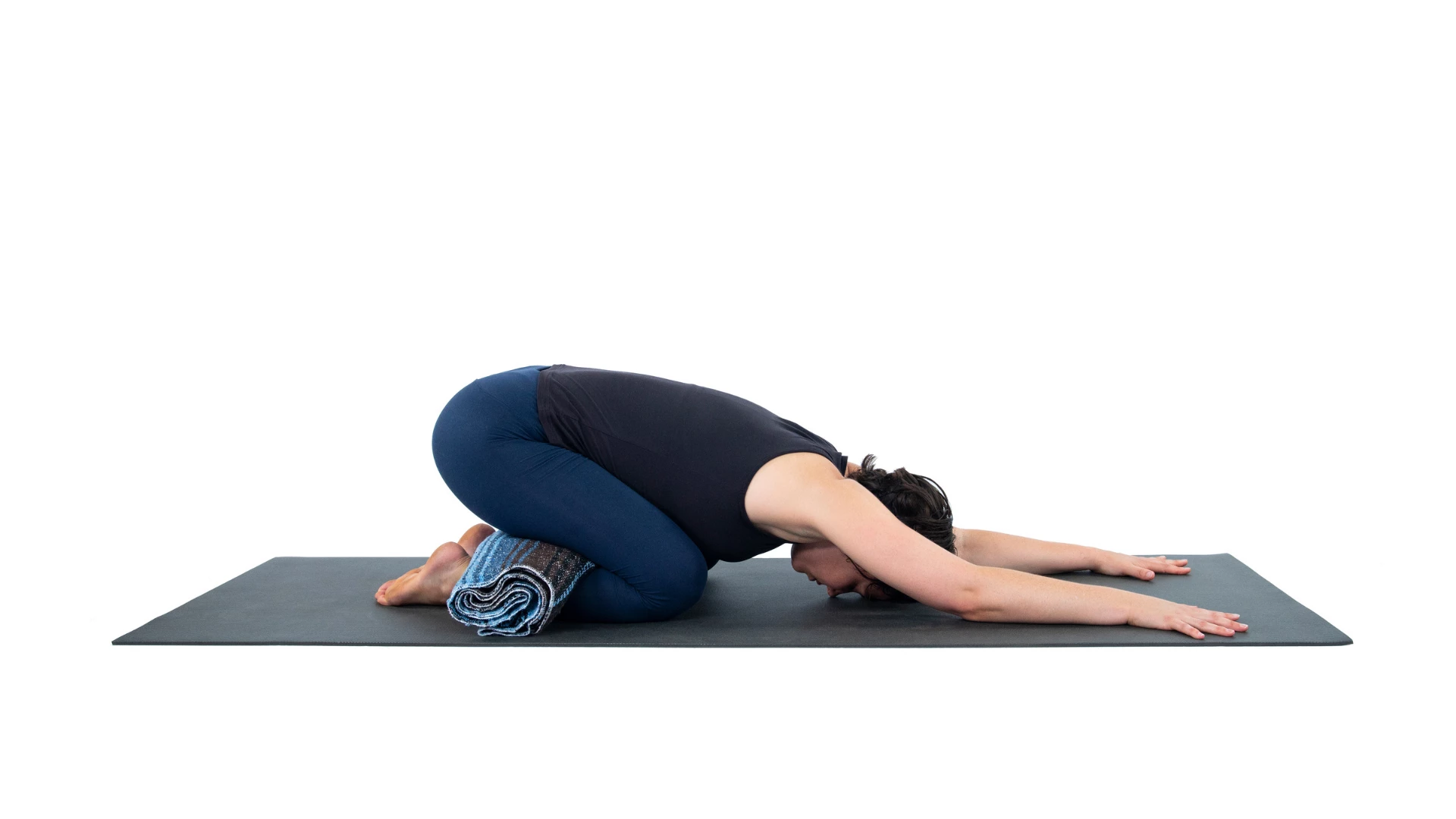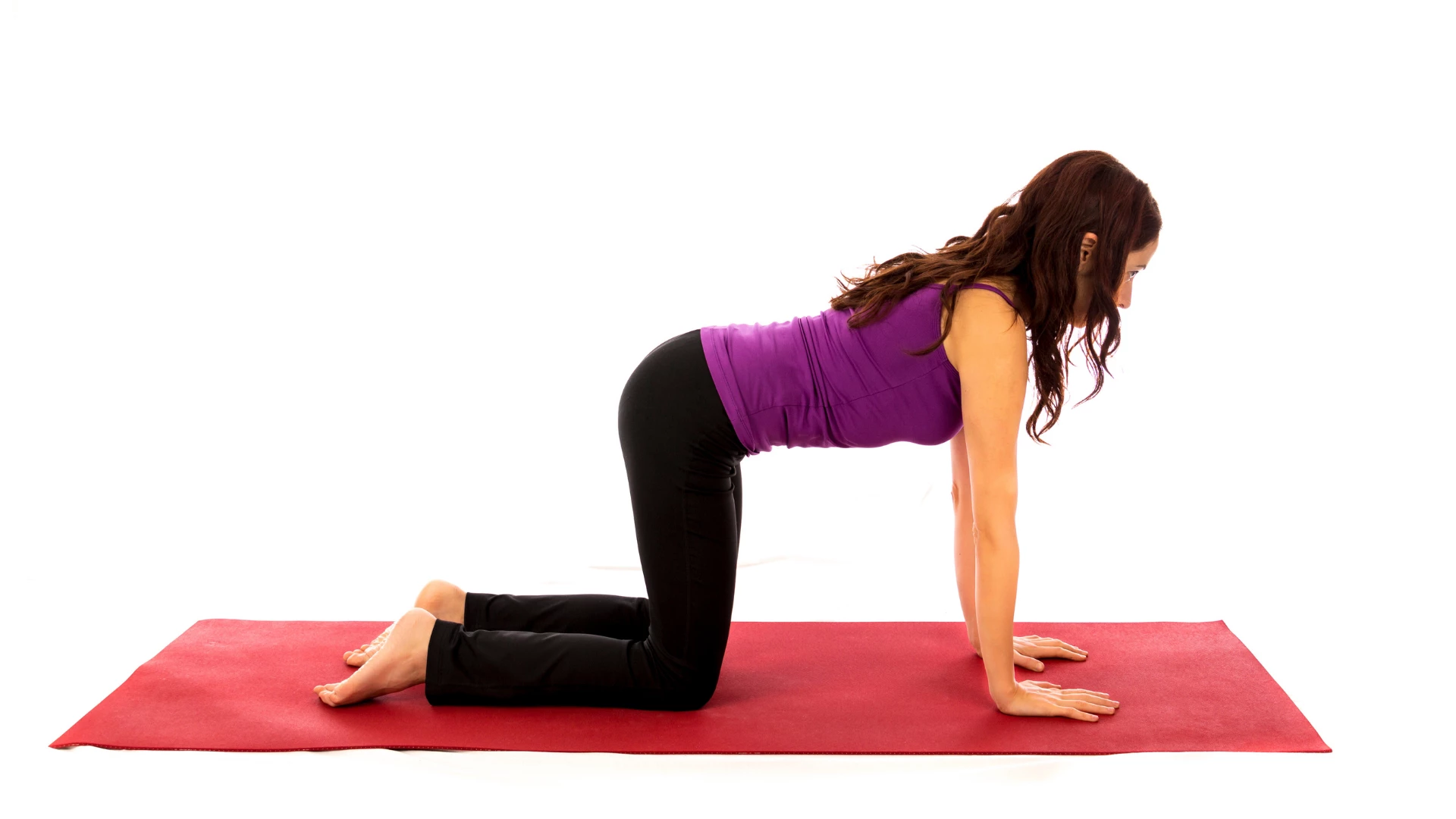How Yoga Can Help Cultivate Lower Back Health

Article At A Glance
Lower back health is a product of ALL the components of you. You might be thinking: okay, that means my lower back pain history, lower back mobility, flexibility, strength, my hip or hamstring mobility and flexibility, my core strength, and my overall back strength. Well, you’re on the right (back) track, but that’s only half of it! Lower back resilience is a byproduct of things people don’t think about often enough.
5 Keys to Lower Back Health
1. Quantity and Quality of Your Sleep
Studies show a major connection between insufficient sleep and an increased risk of chronic back pain.
2. Your Diet and Hydration
Internationally known and well-respected Dr. Mark Hyman has written and talked about the inflammatory nature of the typical American diet, which has a degenerative effect on our spinal discs, among other health issues. Did you know that for every pound of extra belly fat, it’s almost seven to ten pounds of extra load on each of your spinal discs? Our diets need to be upgraded with the right kinds of muscle-building nutrients combined with movement science exercises to build up weak muscles and unload muscles that are overdoing it.
3. Your Thoughts About Lower Back Health
This includes what you think or have heard about your back, such as being told:
- You have a bad or weak back.
- You have herniated discs.
- You have the back of an elderly person.
- Don’t bend like this, or you’ll hurt your back.
None of this is helpful. These are nociceptive (relating to the perception or sensation of pain) phrases that instill the fear of fragility and lock us further into a narrative that is less based in reality and the present moment.
How about this instead: we all have strong vertebrae, and sometimes our backs just hurt.
4. Your Mindful Reactions
Imagine bending over and feeling a low back twinge. You can say:
“Crap, there goes my back again. Now I need to sit still for the rest of the week, call my doc, and take some Advil.”
Or …
“Hmm, I know this feeling. It happened once or twice before. I won’t bend that way again. Instead, I’ll rest today and try gentle movements tomorrow.”
Which of the two is more likely to lead to chronic or consistent pain? Yep, that’s right: the first one.
It’s about paying attention to and trusting what your back/your body is telling you so you can gently move forward instead of locking up in fear.
5. Your Exercise Habits, Yoga, and Lower Back Health
- Do you do JUST one thing? Like Crossfit, jogging, or yoga? And if so, do you change things up?
For example, with Crossfit, do you explore different squat variations (front squats, back squats, sumo squats)? If you do only yoga, do you try alternate ways to do Sun Salutations (Surya Namaskara)? When running, do you only use a treadmill or do you vary the planes of movement? When you bend to pick something up, is it always the same bend? Or does it change?
- Do you move in a variety of ways or have different strategies?
The more movement variation you have, the more resilience you build. Changing things up creates a new stimulus, which creates more progress over time. Rotating exercises and activities also decreases the risk of injury.

- Do you move stiffly or fluidly?
If you’re feeling stiff, do you stretch and move your joints as much as you can, slowly and gently? And then, when your joints feel less stiff and painful, do you get up and move? Maybe take a warm bath or shower so the blood can move to the surface of the skin?
- Do you connect the mind to the body, or are you planning dinner?
Are you in the here and now, aware and mindful of what is happening at this very moment? Or are you most often distracted by rumination on the past or worries about the future?
- Do you grip your belly? Do you grip your back?
While we may focus more on aesthetics, bracing ab muscles is not good. It doesn’t stabilize the back. In fact, it shuts down the diaphragm. Meanwhile, back gripping (sitting up tall, sticking out your chest) forces the joints of your spine together and limits your ability to move.
- How you breathe (note: this is hugely important):
Do you use just the front ribs, side, neck, or belly when you breathe? Or do you use all of your diaphragms? Effective diaphragmatic breathing (aka abdominal breathing) encourages full oxygen exchange. This is when you’re beneficially trading incoming oxygen for outgoing carbon dioxide.
- Does your pelvic floor move?
Your diaphragm should move downward into your upper abdomen when you breathe. This increased pressure in the abdomen results in the pelvic floor also lowering down and getting a small stretch. When you exhale, the pressure in your abdomen decreases as your diaphragm rises into your lower ribcage, and the pelvic floor rises back. With every diaphragm breath, the ribs move, the thoracic spine moves, the viscera move, the bowel moves, and the psoas muscle moves. All of this is related to the health and mobility of the lower back.
- How does your thoracic spine move?
If the thoracic spine is tight or immobile, the lower lumbar spine will compensate and take on the load for the lack of movement, often leading to low back pain and fatigue. A stiff thoracic spine can also adversely affect the function of your diaphragm and core.
The thoracic spine should be the main source of trunk rotation due to the shape of the bones. The lumbar spine does not allow for as much rotation.
When we want to twist, and the thoracic spine doesn’t cooperate, we then recruit more of the lumbar spine, and it becomes a stressful event.

- How does your pelvis move?
Can your pelvis move in tilts and hikes and rotations? Again, if you can’t move your pelvis, your spine picks up the slack, taking on more load and more mobility than it should—a recipe for pain.
Ideally, we share the load of movement across the whole body, including the pelvis and thoracic spine. Sharing the load helps with the coordinated effort of muscles, bones, and the nervous system to maintain healthy balance, posture, and alignment.
3 Ways to Determine Lower Back Health
We want you(r) back in motion, so let’s do a few checks to assess the parts that contribute to lower back health (the thoracic spine, pelvis, breath, etc.).
Thoracic Spine Check
- Stand with your butt, lower back, and head flat up against a wall.
- If you can do that, bring your chin toward your chest and flex your spine into a c (cat) shape, and feel each vertebra touch the wall as you flex all the way down and roll back up.
Pelvic Check for Low Back Health
Posterior pelvic tilt:
- Stand with your hands on your hips. Imagine your pelvis as a bucket of water.
- Without leaning back, try to pour the water in your imaginary bucket out behind you. To do this, you’ll need to tilt the pelvis back as though tucking your tail.
Anterior pelvic tilt:
- Stand with hands on your hips, and now try to pour the water in your imaginary bucket out in front of you without leaning forward.
- This should cause an arch in your low back, and it’ll look like you’re sticking your butt out.
Ideally, your pelvis should be resting in neutral so that if it were a bucket of water, none would spill out.
Yogic Breath Check
- Lie down and place your hands on the sides of the lower ribs.
- Breathe in smoothly through the nose and out through the mouth with slightly parted lips.
- Are both hands moving outward slightly on the in-breath and together on the out-breath? Or Is your chest dominating your breathing? Or your belly?
- Ideally, it should be all three working in unison.
Insufficient or poorly coordinated movement of any of the above can compromise the mobility and stability of the spine and potentially compromise lower back health.
Also, read...
Are Women More Vulnerable to SI Joint Pain? How Yoga Can Help
Somatic TFL and Psoas Release
Related courses
Breath as Medicine: Yogic Breathing for Vital Aging
Yoga and Myofascial Release: Releasing Chronic Tension with the Bodymind Ballwork Method

Diana Zotos Florio is a physical therapist, yoga teacher, certified strength and conditioning specialist, mother of three, and the cofounder of Threes Physiyoga Method. A constant mover, she loves all forms of exercise and considers movement to truly be medicine.
Prior to founding TPM, Diana spent seven years working as a physical therapist at the Hospital for Special Surgery treating anyone from inpatient joint replacement patients to professional marathon runners. She’s been practicing yoga for over 20 years and has always treated her patients through the lens of yoga. Diana completed yoga teacher training at OM Yoga in NYC in 2010.







